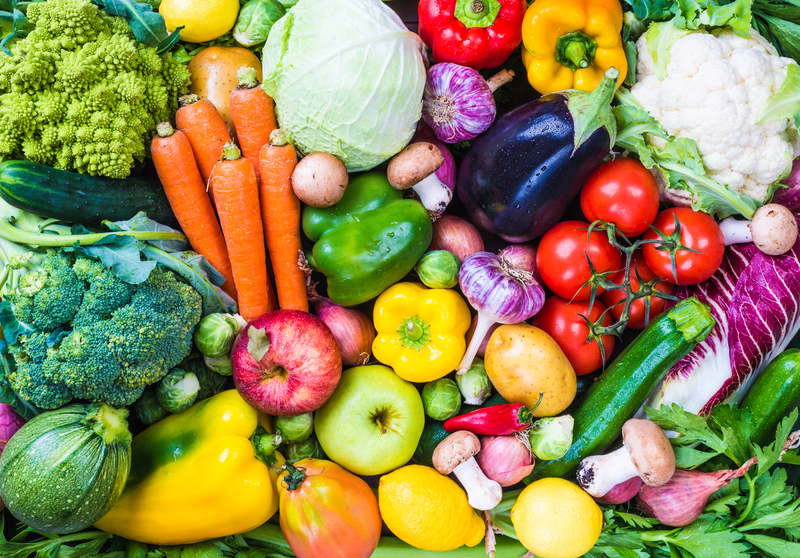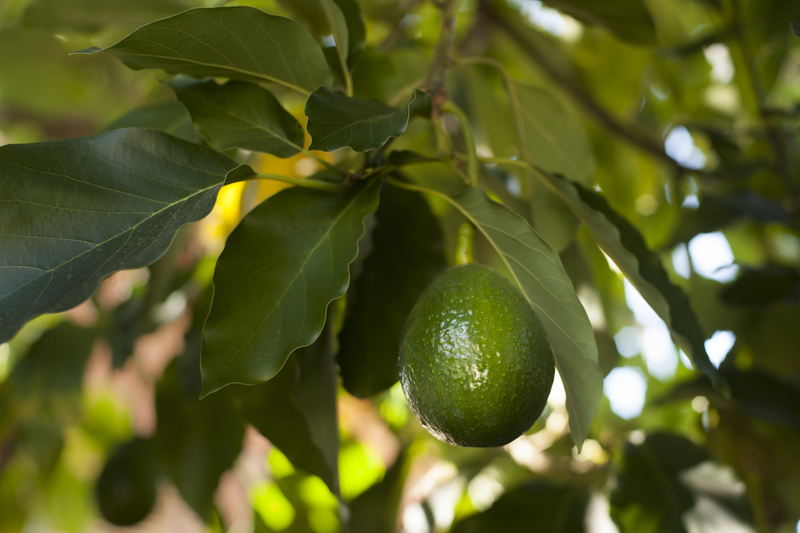Vertical Gardening: High-Rise Horticulture
Posted on 18/08/2025
Vertical Gardening: High-Rise Horticulture - The Urban Green Revolution
In today's rapidly urbanizing world, space is at a premium and the necessity for eco-friendly living has never been more urgent. One innovative solution gaining traction in cities across the globe is vertical gardening, also referred to as high-rise horticulture. This forward-thinking gardening technique brings nature to unlikely places--high-rise balconies, building exteriors, small patios, and indoor spaces--offering not only aesthetic benefits but also strengthening our connection to nature, even in the densest cityscapes.

What is Vertical Gardening?
Vertical Gardening, at its core, is the practice of growing plants upward rather than outward. Instead of relying on traditional horizontal garden beds, vertical gardens make use of walls, fences, trellises, and custom-made structures to stack greenery in tiers. This smart approach maximizes limited space, turning blank walls and corners into lush, vibrant displays.
The Essence of Urban Vertical Gardening
By leveraging vertical planters, wall-mounted pots, hydroponic towers, and climbing structures, even residents with minimal square footage can cultivate fresh herbs, flowers, or vegetables. This form of high-rise horticulture not only enriches visual appeal but also provides accessible means for city dwellers to practice sustainability and self-sufficiency.
Benefits of Vertical Gardens
From personal well-being to environmental impacts, the advantages of vertical gardening are profound and far-reaching:
- Maximized Space Usage: Perfect for urban environments, vertical gardening transforms any narrow alley, balcony, or wall into productive green space.
- Climate Regulation: Green walls act as natural insulators, reducing heat, filtering air pollutants, and lowering energy costs by cooling interiors.
- Improved Air Quality: Plants in vertical gardens absorb carbon dioxide and toxins, significantly improving indoor and outdoor air.
- Enhanced Aesthetic Appeal: Vertical gardens create stunning living art installations, boosting property value and resident happiness.
- Noise Reduction: Dense foliage absorbs and deflects urban noise, making high-rise buildings much quieter and serene.
- Promotes Biodiversity: Vertical horticulture offers habitats for pollinators, insects, and small birds, contributing to urban biodiversity.
- Food Security & Savings: Grow your own fresh greens, herbs, and even fruits, reducing grocery bills and food miles.
- Mental and Physical Health: Tending plants has proven therapeutic benefits--elevating mood, reducing stress, and encouraging gentle physical activity.
Types of Vertical Garden Systems
Vertical gardens are incredibly versatile, and there is a system suitable for almost every scenario, from residential balconies and office walls to urban streets and large-scale commercial buildings. Below are the most popular types:
1. Living Wall Systems
- Modular Panels: Pre-planted panels or trays are attached to walls, allowed to grow and create seamless, living murals.
- Hydroponic Walls: Soil-less systems where plants are fed with nutrient-rich water, often featuring automatic irrigation.
- Pocket Planters: Fabric or plastic pockets are fixed to vertical surfaces, each holding an individual plant or group of plants.
2. Trellises and Climbing Supports
- Trellis grids support climbing vegetables, flowers, or vines such as tomatoes, peas, and morning glories, taking advantage of vertical space.
- Wire mesh and lattice panels are common DIY options suitable for both indoor and outdoor applications.
3. Stacked Planters and Towers
- Stackable pots or tower gardens are compact and commercial solutions ideal for patios, balconies, and rooftops.
- Often used for herbs, lettuce, strawberries, and other small, shallow-rooted plants.
4. DIY Vertical Planter Projects
- Repurpose materials like wooden pallets, gutter systems, plastic bottles, or even shoe organizers to create unique, budget-friendly vertical gardens.
- This approach gives you creativity to customize the scale, style, and plant selection.
Choosing the Right Plants for Vertical Gardens
Not all plants are ideal for vertical cultivation. When selecting what to incorporate in your high-rise horticulture project, consider factors such as light conditions, wind exposure, and available space. Generally, plants with compact root systems, trailing or climbing habits, and minimal maintenance requirements are best-suited for vertical planting.
Best Plants for Vertical Gardening
- Flowering Plants: Petunias, ferns, begonias, pansies, and geraniums are popular for stunning vertical displays.
- Edible Greens: Lettuces, kale, spinach, swiss chard, and arugula thrive in vertical setups.
- Herbs: Basil, thyme, mint, chives, oregano, and parsley are compact and aromatic additions.
- Succulents: Sedum, echeveria, and sempervivum offer drought tolerance and unique textures.
- Climbing Vines: Ivy, jasmine, clematis, and morning glory for lush, cascading effects.
- Small Fruit Varieties: Strawberries, dwarf tomatoes, and bush beans for edible gardens.
Pro Tips for Plant Selection
- Group plants by light needs: Shade-loving plants together for north-facing walls, sun-lovers for south-facing.
- Mix annuals and perennials: Enjoy seasonal color while maintaining year-round greenery.
- Use trailing species for dramatic, cascading vertical effects.
How to Build a Vertical Garden: Step-by-Step Guide
Ready to start your own vertical gardening adventure? Follow these steps:
Step 1: Choose Your Space
- Identify a well-lit wall, balcony railing, or fence with at least a few hours of daily sunlight.
- Measure dimensions and identify any exposure to harsh wind or rain.
Step 2: Select Your System
- Choose between ready-made panels, trellises, pocket planters, or DIY structures based on your skill level and budget.
- Pocket planters and stackable towers are ideal for beginners and renters; mounted panels are great for permanent installations.
Step 3: Install Proper Irrigation
- Small vertical gardens can be watered by hand, but larger ones benefit from drip irrigation or built-in hydroponic systems.
- Avoid overwatering by ensuring proper drainage in all containers or pockets.
Step 4: Prepare Growing Medium
- Use high-quality, lightweight potting mix that retains moisture but drains well.
- For hydroponic systems, use soilless media like coconut coir, vermiculite, or peat moss blends.
Step 5: Plant and Arrange
- Start with young, healthy transplants rather than seeds for faster establishment.
- Arrange plants by growth habit--put taller or climbing types at the bottom, trailing plants near the top or edges for that "waterfall" effect.
Step 6: Maintain and Prune
- Regularly check soil moisture, and fertilize lightly every few weeks.
- Prune overgrown foliage and remove any diseased or dead leaves to keep your vertical garden healthy and neat.
Advanced Vertical Gardening Techniques
Hydroponic and Aeroponic Vertical Gardens
For tech-savvy gardeners, hydroponic and aeroponic systems are at the forefront of high-rise horticulture innovation. These soil-less methods use water-infused nutrients or mist to feed plants, allowing for faster growth, cleaner conditions, and virtually no weeding. They are ideal for offices and modern homes with limited access to outdoor sunlight.
Smart Gardens and Automated Systems
Integrated smart technology now allows for fully automated high-rise horticultural systems. Timed LED grow lights, self-watering apps, and smart sensors make managing your vertical garden easy--even remotely. This opens up vertical gardening to people with busy lifestyles or limited experience.
Vertical Gardening in Architecture & Urban Design
More than a trend, vertical gardening is becoming a central feature in sustainable architecture. Green facades and living walls are now used to:
- Reduce heat islands in crowded cities.
- Mitigate stormwater runoff by absorbing rainwater.
- Improve urban biodiversity by creating habitats.
- Increase property value by adding visual and ecological appeal.
Notable projects like the Bosco Verticale in Milan and One Central Park in Sydney have set new standards for eco-conscious skyscraper design, inspiring cities worldwide to embrace high-rise horticultural solutions.
Containers, Materials, and Installation Tips
When setting up your vertical garden, the choice of containers and materials can make a big difference in longevity and success.
Recommended Materials for Vertical Gardens
- Lightweight plastics: Durable and easy to affix to walls; ensure they are UV-resistant for outdoor use.
- Recycled wood or pallets: Offers a rustic aesthetic, but should be treated for moisture resistance.
- Metal grids: Galvanized for rust resistance, excellent for supporting climbing vines.
- Geotextile fabrics: Allow roots to breathe and prevent waterlogging, as seen in pocket planters.
- Ceramic pots: Attractive for indoor vertical gardens, though heavier and requiring secure mounting.
Essential Installation Tips
- Sturdy Mounting: Use proper anchors and supports, especially for larger installations filled with wet soil.
- Waterproofing: Protect interior walls with waterproof barriers to prevent water damage and mold.
- Accessible Design: Ensure you can easily reach all plants for watering, maintenance, and harvesting.
Maintenance Tips for Thriving High-Rise Gardens
To keep your vertical garden healthy year-round:
- Water regularly: Vertical gardens can dry out quickly, so check soil moisture more frequently.
- Feed your plants: Nutrient demands increase in confined spaces--supplement with organic or slow-release fertilizers.
- Monitor pests: Confined areas can attract aphids, mealybugs, and spider mites; treat promptly with natural remedies.
- Rotate crops: Regularly replant annual edibles and rotate crops to prevent soil exhaustion and pest buildup.
- Rejuvenate planters: Refresh soil and compost annually to maintain nutrient levels and encourage healthy growth.
Challenges and Solutions in Vertical Gardening
Common Problems
- Watering difficulties due to gravity and faster evaporation.
- Limited root space for plants in shallow containers.
- Poor drainage leading to root rot or fungal growth.
- Structural concerns--added weight on walls or balconies.
Creative Solutions
- Use self-watering planters or drip irrigation systems to ensure even moisture.
- Choose shallow-rooted plants and regularly check for root crowding.
- Incorporate layers of gravel or hydroton balls in containers for improved drainage.
- Always consult with a professional or building manager before attaching heavy vertical gardens to ensure weight safety.

Future of High-Rise Horticulture
The future of vertical gardening is bright, fueled by urbanization, environmental concerns, and a growing desire for sustainable, healthy lifestyles. As technology advances, expect to see:
- Smart, integrated green walls in residential complexes and luxury skyscrapers.
- Community food production through shared rooftop tower gardens.
- Automated, app-controlled hydroponic systems making it easier than ever to grow food indoors.
- Biophilic design becoming the standard in architecture, blending living plants with our built environment for a harmonious, eco-conscious future.
Conclusion: Embrace the Vertical Greening Movement
Vertical gardening is a revolutionary yet accessible method for anyone wanting to maximize greenery and reap the myriad benefits of high-rise horticulture. Whether you're a city dweller with nothing but a window box or a business seeking to eco-upgrade your premises, every vertical garden is a step toward a healthier, more resilient, and visually inspiring urban space.
Start small--think big. Let your walls come alive and become part of the global movement transforming our cities into living, breathing gardens.

